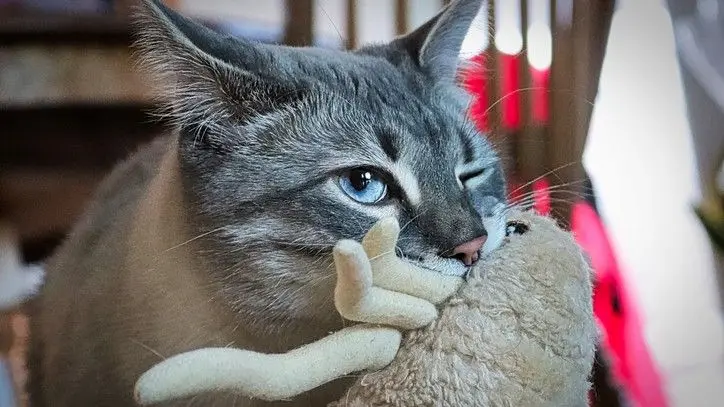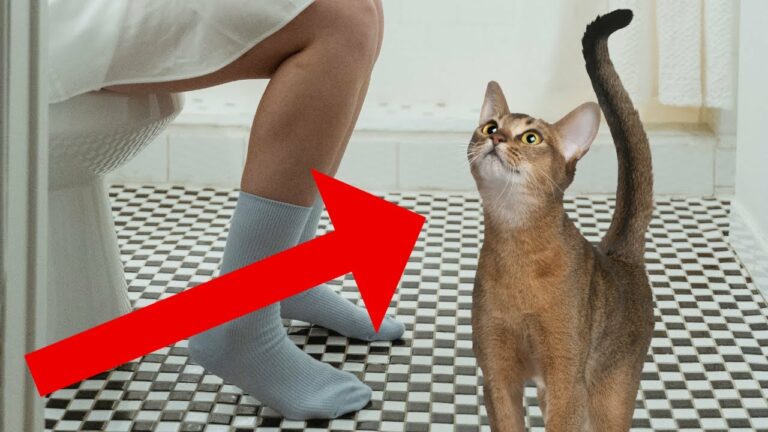How to Train Your Cat to Use a Scratching Post
Cats love to scratch—it’s in their nature! But let’s face it, the last thing you want is for your couch to become your kitty’s favorite scratching surface. So, how do you encourage your feline friend to use a scratching post instead? Training your
Let’s dive into how you can make this happen!
Why Your Cat Needs a Scratching Post

You might wonder, why is it so important for your
Benefits for Your Cat ’s Health
Cats rely on scratching to keep their claws sharp and healthy. Scratching a post allows them to shed the outer layers of their nails, which promotes new growth and keeps their claws in top shape.
Keeping Nails Healthy and Sharp
When your
Providing Stress Relief for Your Cat
Scratching is also a great way for your
Protecting Your Furniture and Belongings
As much as we love our cats, no one enjoys coming home to a scratched-up sofa or shredded curtains. A scratching post can be a lifesaver for your furniture!
Preventing Damage to Upholstery and Wood
Cats can easily damage fabrics, wood, and other materials with their claws. Providing them with a designated scratching post helps direct their energy away from your favorite armchair or dining room table, giving your belongings a break.
Creating a Safe Scratching Environment
Giving your
Choosing the Right Scratching Post

Not all scratching posts are created equal. Finding the right one is key to ensuring your
Consider Different Materials
When it comes to scratching posts, cats can be pretty picky. Some prefer the rough texture of sisal, while others enjoy the softness of carpet or the sturdiness of wood.
Sisal vs. Carpet vs. Wood
Sisal rope is a favorite for many cats because of its durability and texture, which closely resembles tree bark—something wild cats would scratch. Carpeted posts are softer but might not last as long, and wooden posts provide a natural feel.
Vertical vs. Horizontal Scratchers
Some cats love to stretch out vertically when they scratch, while others prefer a horizontal surface. It’s worth experimenting to see which type your
The Importance of Size and Stability
A wobbly scratching post can be a major turn-off for cats. You’ll want to make sure your post is sturdy enough to withstand your
Height Matters
Cats love a good stretch, so look for a post that’s tall enough for your
Stability to Prevent Tipping
No one wants their
Introducing Your Cat to the Scratching Post
Now that you have the perfect post, it’s time to get your
Placing the Scratching Post in Strategic Locations
Location is everything when it comes to scratching posts. Placing it in the right spot can make all the difference.
Near Resting and Play Areas
Cats love to scratch when they wake up or after they’ve been playing. Placing the post near your
Close to Previously Scratched Furniture
If your
Using Positive Reinforcement
Cats respond well to rewards, so use positive reinforcement to encourage good scratching habits.
Rewarding Good Scratching Behavior
Every time your
Redirecting From Unwanted Surfaces
If your
Techniques to Encourage Regular Scratching
Want your
Use Catnip to Attract Your Cat
Catnip can be a great tool for attracting your
Rubbing Catnip on the Post
Rubbing a bit of catnip directly onto the scratching post can make it irresistible to your
Sprinkling Catnip Nearby to Encourage Exploration
You can also sprinkle some catnip around the post to encourage your
Add Toys and Interactive Elements
Turn the scratching post into a fun and engaging spot for your
Dangling Toys from the Post
Hanging a toy from the top of the scratching post can turn it into an interactive play space. Your
Making Scratching Part of Playtime
Incorporating the scratching post into playtime helps your
Troubleshooting Common Issues
If your
What to Do If Your Cat Ignores the Post
It’s common for cats to ignore new items at first, but don’t give up!
If your
Sometimes, simply moving the scratching post to a new spot can make all the difference. Cats can be territorial, and placing the post in a high-traffic area or where your
Preventing Relapses into Furniture Scratching
Once your
You can use double-sided tape or specially designed
Keep up with the positive reinforcement. Rewarding your
Maintaining Your Cat ’s Scratching Routine
Training your
Regularly Replacing or Refreshing the Post
Even the best scratching posts won’t last forever. Knowing when to replace or refresh it can keep your
Scratching posts wear down over time, and if they start to look shabby or lose their texture, your
Sometimes, all it takes to renew your
Encouraging Scratching Through Positive Association
Keeping scratching fun and rewarding will help ensure your
Remember to continue rewarding your
Consistency is key. The more you stick to rewarding good scratching behavior and redirecting your
FAQs
1. How long does it take to train a
It varies by
2. What should I do if my
Try placing the scratching post next to the area your
3. Can I make my own scratching post?
Yes! Many
4. How often should I replace my
It depends on how much your
5. Can declawed cats still use a scratching post?
Yes, even declawed cats benefit from using a scratching post. It provides them with exercise, a way to stretch their muscles, and a surface to mark with scent glands in their paws.
Conclusion
Training your
With patience and consistency, your






